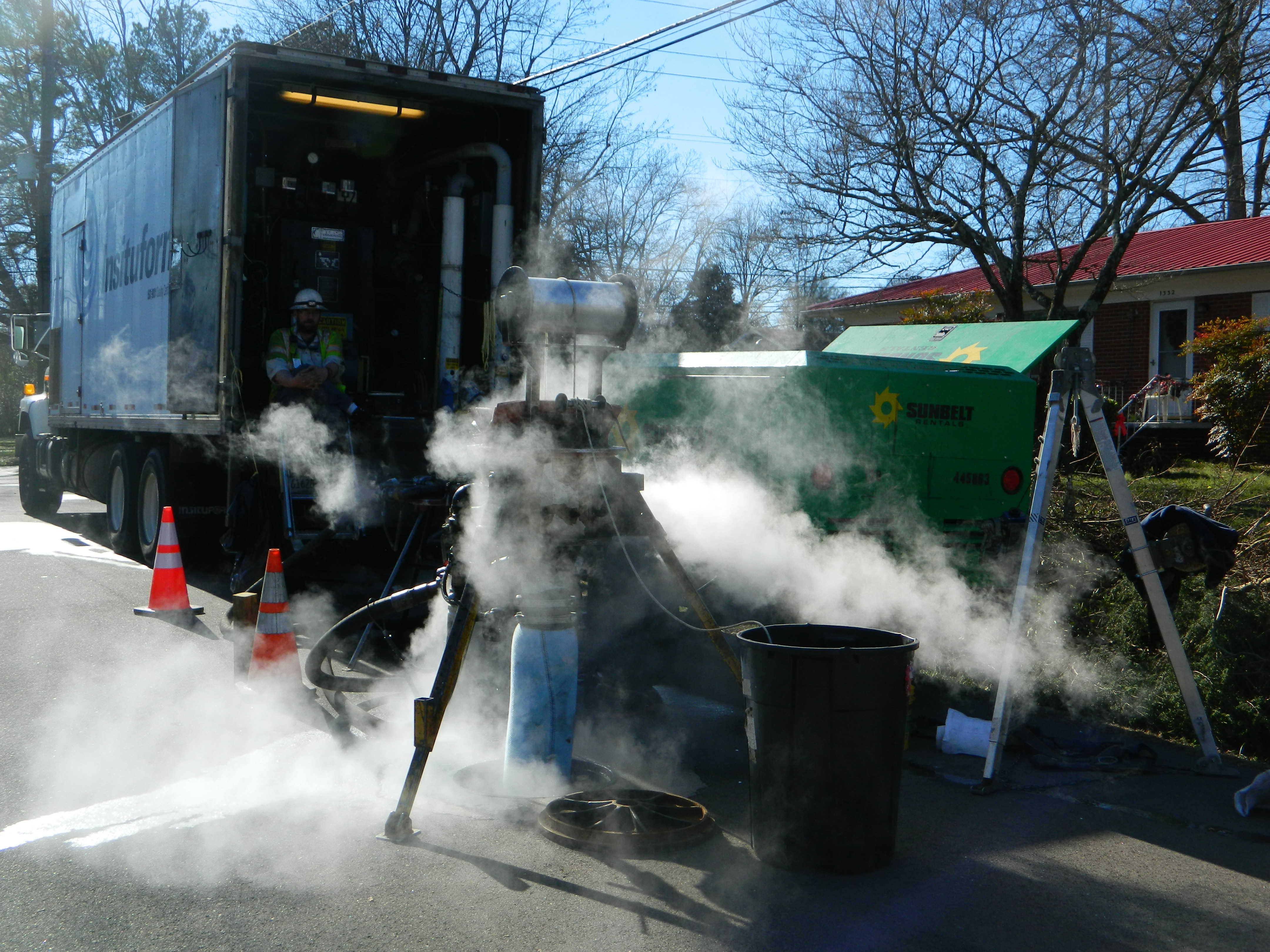CLEVELAND, Tenn. - A long-term Cleveland Utilities project to reduce the number and severity of wastewater overflows is well under way early in its second year of operations.
Earlier this year, Cleveland Utilities decided to redouble the rehabilitation under its 10-year Strategic Commitment to Protect the Environment -- known as SCOPE-10 -- by committing $29 million to the program over its life, more than double the $14 million originally proposed in 2011.
"We think we need to step it up and address those issues once and for all," General Manager Tom Wheeler said previously of the escalated commitment to SCOPE-10 and overflow problems associated with extra-heavy rains in September 2011.
On and in the ground, that means that utility crews and specialist contractors have dedicated time and resources to detecting stormwater inflow and infiltration problems in the sewage network. Invasive stormwater is the core component to sanitary sewer overflows, and it generally enters the wastewater system through damaged pipes and manholes or via illegal downspout connections.
The essential SCOPE-10 strategy is to find and repair the worst inflow offenders instead of all of them, Wheeler said. The project aim is to make the most efficient use of funding.
Cleveland Utilities is engaging two major zones, known as basins 31-45 and 10-36, as part of the SCOPE-10 program, said Greg Clark, the program's manager.
Basin 31-45, which falls within the confines of Chattanooga Pike, Varnell Road and Blackburn Road in southern Bradley County, is undergoing repair work after a year of detection efforts that included manual inspections, nontoxic smoke tests and video camera work. Nearly 23 percent of Cleveland Utilities' inflow and infiltration problems can be traced to this basin, despite the fact that it comprises only 11 percent of the total wastewater system, according to a study by Littlejohnn Engineering.
Crews now are replacing mainline wastewater pipelines in Basin 31-45, said Clark, using a method called "cured-in-place pipe." The method essentially creates a new pipe within an existing damaged pipeline using resin-hardened fibers.
"CIPP saves us money and time," said Brandon Grant, a site manager working with crews in the neighborhood located near South Lee Highway. "It will take one to three hours to complete work on [a 100-yard length of pipeline] instead of three weeks by digging up the street and replacing it."
The cost to the utility and its customers is a big plus, Grant said, citing cured-in-place pipe work expenses as about $30 per foot, compared with $100 per foot to replace the line by entrenchments.
Inflow detection efforts began a few months ago for Basin 10-36, located between the Village Mall and Tinsley Park and bordered by Keith Street and Interstate 75. This west-central area of the city will undergo investigation for some time before repairs begin, Clark said.
